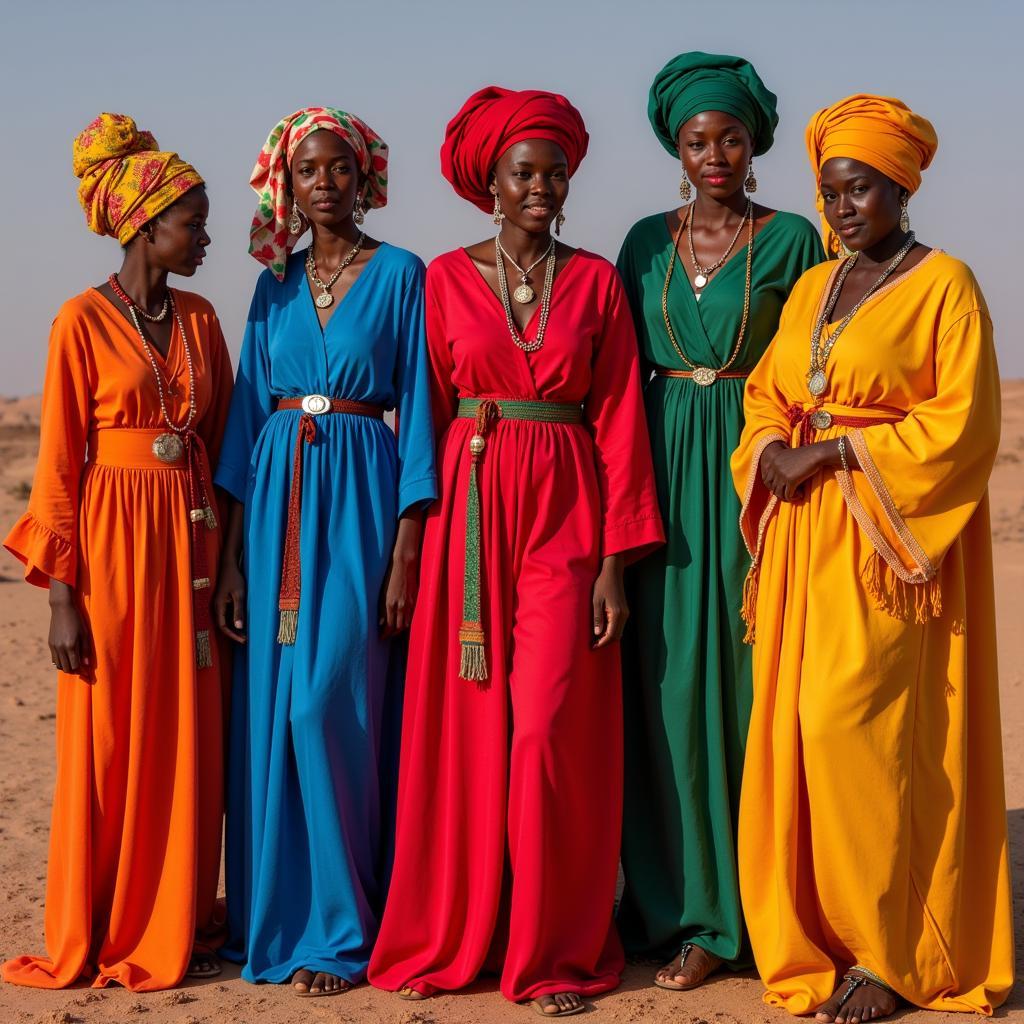Exploring African American Voodoo in Film
African American Voodoo Movies have captivated audiences for decades, blending elements of horror, folklore, and cultural representation. This article delves into the portrayal of voodoo in cinema, exploring its historical context, cultural significance, and the impact these films have had on shaping public perception.
A Cinematic Journey Through Voodoo: From Exploitation to Empowerment
Voodoo, a syncretic religion with roots in West African traditions, arrived in the Americas through the transatlantic slave trade. It evolved, blending with indigenous beliefs and Catholicism, creating a unique spiritual practice. Early cinematic portrayals, however, often misrepresented voodoo as a tool for evil, perpetuating harmful stereotypes and feeding into a narrative of fear and otherness. This skewed perspective contributed to misconceptions about African American culture and religious practices.
Early Hollywood and the “Voodoo Curse”
Early Hollywood often exploited the mystique surrounding voodoo, using it as a plot device to create suspense and horror. Films like “White Zombie” (1932) and “I Walked with a Zombie” (1943) presented voodoo as a sinister force controlled by charismatic but malevolent practitioners. These films rarely delved into the complexities of the faith, choosing instead to focus on sensationalized rituals and exaggerated depictions of black magic.
The Blaxploitation Era and Reclaiming the Narrative
The Blaxploitation era of the 1970s marked a turning point. Films like “Sugar Hill” (1974) and “Abby” (1974) presented voodoo from an African American perspective, often as a source of empowerment against oppression. These films, while still operating within genre conventions, began to challenge the negative stereotypes prevalent in earlier cinema.
Beyond the Stereotypes: Understanding Voodoo’s Cultural Significance
Moving beyond simplistic narratives of good versus evil requires understanding the cultural significance of voodoo. It’s a religion with a rich history, complex rituals, and a deep connection to ancestry and community. For many practitioners, it represents a powerful link to their heritage and a source of spiritual strength.
Voodoo in Contemporary Cinema: Nuance and Representation
Contemporary films are beginning to engage with voodoo in more nuanced ways, exploring its complexities beyond the horror genre. These films often focus on the cultural and spiritual aspects of the practice, presenting it as a living faith with diverse interpretations.
“Voodoo is often misunderstood and misrepresented in cinema. It’s crucial to move beyond the stereotypes and engage with the rich history and cultural significance of this complex faith,” says Dr. Anika Toussaint, a cultural anthropologist specializing in African diasporic religions.
The Future of African American Voodoo in Movies
The portrayal of voodoo in film continues to evolve, reflecting changing societal attitudes and a growing appreciation for cultural diversity. As filmmakers strive for more authentic and respectful representations, the future of African American voodoo movies holds the potential to educate, entertain, and challenge preconceived notions.
“Film has the power to shape perceptions and challenge stereotypes. By telling authentic stories about voodoo, we can foster understanding and appreciation for this often-misunderstood religion,” adds Toussaint.
In conclusion, African American voodoo movies offer a fascinating lens through which to examine the intersections of culture, religion, and representation in cinema. From exploitative portrayals to narratives of empowerment and nuanced explorations of faith, these films reflect a complex and evolving relationship with voodoo. The journey continues, with the hope for even more accurate and insightful representations in the future.
FAQ
- What is the origin of voodoo? (Voodoo originates from West African traditions and evolved in the Americas through the transatlantic slave trade.)
- How has voodoo been portrayed in early Hollywood films? (Early Hollywood often portrayed voodoo as a tool for evil, perpetuating harmful stereotypes.)
- How did Blaxploitation films change the portrayal of voodoo? (Blaxploitation films began to present voodoo from an African American perspective, often as a source of empowerment.)
- What is the cultural significance of voodoo? (Voodoo represents a rich history, complex rituals, and a deep connection to ancestry and community.)
- How are contemporary films portraying voodoo differently? (Contemporary films are beginning to engage with voodoo in more nuanced ways, exploring its complexities beyond the horror genre.)
- What is the future of African American voodoo movies? (The future holds potential for more accurate and insightful representations, fostering understanding and appreciation.)
- What are some examples of African American voodoo movies? (Examples include “Sugar Hill,” “Abby,” and more contemporary films exploring nuanced representations.)
Need support? Contact us 24/7: Phone: +255768904061, Email: kaka.mag@gmail.com, Address: Mbarali DC Mawindi, Kangaga, Tanzania. We are here to help!

